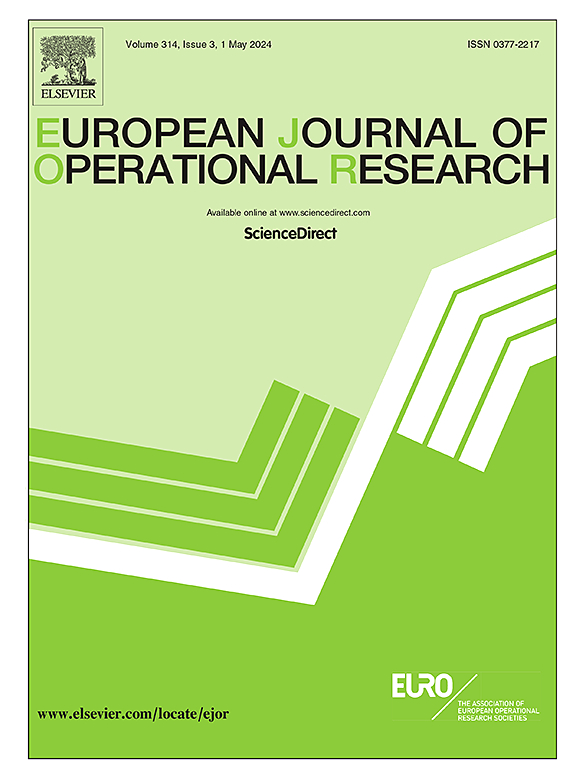A new branch-and-cut approach for integrated planning in additive manufacturing
IF 6
2区 管理学
Q1 OPERATIONS RESEARCH & MANAGEMENT SCIENCE
引用次数: 0
Abstract
In recent years, there has been considerable interest in the transformative potential of additive manufacturing (AM) since it allows for producing highly customizable and complex components while reducing lead times and costs. The rise of AM for traditional and new business models enforces the need for efficient planning procedures for AM facilities. In this area, the assignment and sequencing of components to be built by an AM machine, also called a 3D printer, is a complex challenge combining two combinatorial problems: The first decision involves the grouping of parts into production batches, akin to the well-known bin packing problem. Subsequently, the second problem pertains to the scheduling of these batches onto the available machines, which corresponds to a parallel machine scheduling problem. For minimizing makespan, this paper proposes a new branch-and-cut algorithm for integrated planning for unrelated parallel machines. The algorithm is based on combinatorial Benders decomposition: The scheduling problem is considered in the master problem, while the feasibility of an obtained solution with respect to the packing problem is checked in the sub-problem. Current state-of-the-art techniques are extended to solve the orthogonal packing with rotation and used to speed up the solution of the sub-problem. Extensive computational tests on existing and new benchmark instances show the algorithm’s superior performance, improving the makespan by 18.7% on average, with improvements reaching up to 97.6% for large problems compared to an existing integrated mixed-integer programming model.

用于增材制造综合规划的新分支切割法
近年来,人们对增材制造(AM)的变革潜力产生了浓厚的兴趣,因为它可以生产高度定制化的复杂部件,同时缩短交付周期并降低成本。随着传统和新型商业模式中增材制造的兴起,对增材制造设备的高效规划程序提出了更高的要求。在这一领域,AM 机器(也称为 3D 打印机)要制造的部件的分配和排序是一个复杂的挑战,它结合了两个组合问题:第一个决定涉及将部件分组到生产批次中,类似于著名的料仓包装问题。随后,第二个问题涉及将这些批次安排到可用机器上,这相当于并行机器调度问题。为了最小化生产间隔,本文提出了一种新的分支-切割算法,用于对不相关的并行机器进行综合规划。该算法基于组合 Benders 分解:在主问题中考虑调度问题,而在子问题中检查获得的解决方案对于打包问题的可行性。当前最先进的技术被扩展用于解决旋转正交打包问题,并用于加快子问题的解决速度。在现有的和新的基准实例上进行的大量计算测试表明,与现有的综合混合整数编程模型相比,该算法性能优越,平均可将时间跨度提高 18.7%,在大型问题上的改进幅度最高可达 97.6%。
本文章由计算机程序翻译,如有差异,请以英文原文为准。
求助全文
约1分钟内获得全文
求助全文
来源期刊

European Journal of Operational Research
管理科学-运筹学与管理科学
CiteScore
11.90
自引率
9.40%
发文量
786
审稿时长
8.2 months
期刊介绍:
The European Journal of Operational Research (EJOR) publishes high quality, original papers that contribute to the methodology of operational research (OR) and to the practice of decision making.
 求助内容:
求助内容: 应助结果提醒方式:
应助结果提醒方式:


